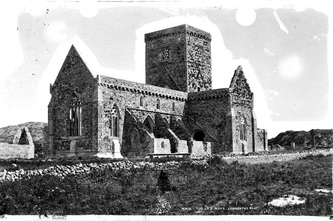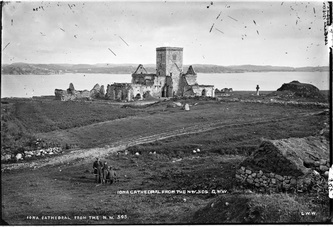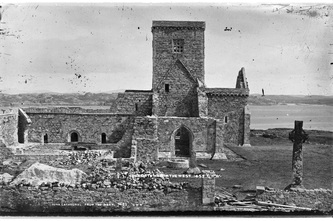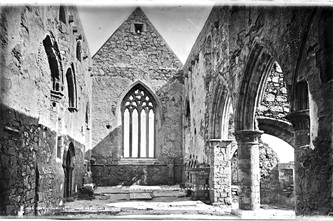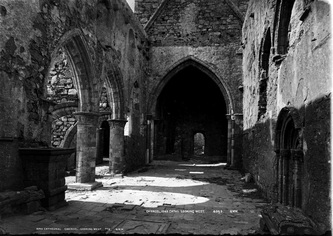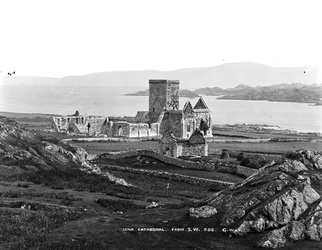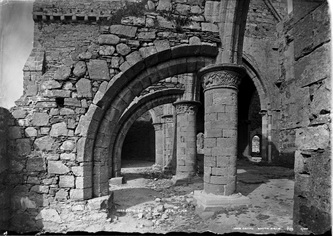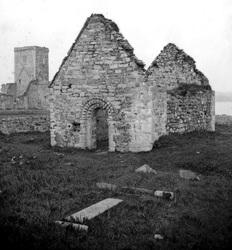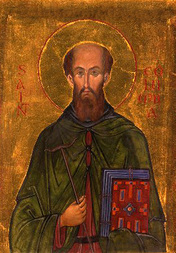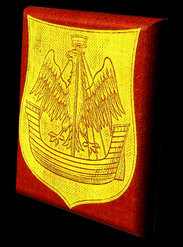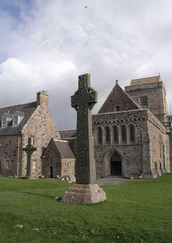| who_destroyed_iona_abbey_ppsx.ppsx | |
| File Size: | 2548 kb |
| File Type: | ppsx |
ARGYLL EARLS, "LEADERS IN THE FIELD OF THE REFORMED RELIGION" :-
THEY ASSET STRIP, SUPPRESS, PLUNDER AND DESTROY IONA [click and save/open for slide presentation]
The "empty, greedy capacious maws" of the 1st, 5th and 8th Earls of Argyll (or any Campbell Earl) NEVER contributed anything whatsoever over 300 years to the foundation donations and set up costs, the land endowments (perpetual financing = rents/tithes, etc), building, materials, resources, labour, maintenance, rebuilding, arts, education, industries, protection, welfare, etc - IE, THEY NEITHER GAVE, NOR INVESTED, NOR CONTRIBUTED ANYTHING AT ALL TO IONA ABBEY {or any abbey!}, BUT THEY :-
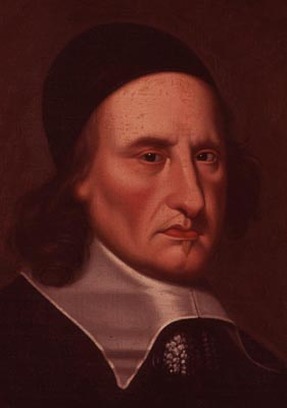
Archibald 8th Earl;
First Marquess
- Heavily partake of "the fruits" of Iona Abbey {pps 330-331};
- With unconscionable avarice, and destroying any notion of what good the Protestant Reformation stood for, they regarded the Abbey's income as their hereditary "family propriety interest."
- An astounding double standard from the Reformation 'leader in the field' and a selfish, unprincipled contravention to both Martin Luther’s “Two Kingdoms” for separation of Church and State, and John Knox’s “First Book of Discipline” that all of the assets of the old church should pass to the new!
- "At St Andrews, Knox met by appointment (1559) with the Prior of the Augustinian monastery, the well known Lord James Stewart, and with Archibald the fifth Earl of Argyll. But I must pause here a moment to make a few remarks on these the two most influential of the lay Reformers of Scotland, the first of whom was, at this time, only twenty six years old, and the latter no more than eighteen; both, it must be confessed far too young and inexperienced, and as the event proved, too greedy of "filthy lucre," to conduct so momentous a work as the Reformation of the Christian Church." "History of St Andrews - VOL I"; p.330; Rev. Lyon CJ, Presbyter of the Episcopal Church, St Andrews; 1843.
- With unconscionable avarice, and destroying any notion of what good the Protestant Reformation stood for, they regarded the Abbey's income as their hereditary "family propriety interest."
- “Bombarded with cannon" MacLean JP; "History of the Clan MacLean"; 1889; p.318. {In 1887 he went to the Island of Mull in Scotland to collect material for his
"History of the Macleans}
"The month of May of the memorable year 1559. In consequence of a sermon which KNOX preached at Perth, the multitude rose en mane, and destroyed the Carthusian, Franciscan, and Dominican monasteries in that town". (History of St Andrews; p.329)
"1561, when an Act of the Convention of Estates was passed "for demolishing all the abbeys of monks and friars, and or suppressing what so ever monuments of idolatrie were remaining in the realm." In compliance with this edict, lona shared the fate of nearly all the other cathedrals of Scotland. The monastery was bombarded with cannon...."
"The carrying out of this act was remitted to Argyll and Glencairn, and much has been written with regard to the great damage caused by the mob to the building and monuments and the valuable library". - MacGibbon, David; Ross, Thomas. "Ecclesiastical architecture of Scotland from the earliest Christian times to the seventeenth century; p.48; 1896-97.
BBC : The Scottish Reformation:- "Knox was roused from exile and returned to Scotland, preaching a sermon against idolatry in Perth which unleashed a seething Protestant mob. Iconoclasm, the destruction of religious images, swept the nation. In St Andrews the army of the Lords of the Congregation stripped the altars, smashed the icons, destroyed the relics and whitewashed the walls of its churches over night." - Overthrew on Iona “some of the finest monuments of the monastery and the altars”;
- Suppressing “Idolatori and all monumentis thairof”.
- Suppressing “Idolatori and all monumentis thairof”.
- "Lost" 300 irreplaceable grave-slab inscriptions compiled in the 1650's of "the best men of all the Isles" from St Oran's cemetery (MacDonald, McLean, MacKinnon, McLeod, MacSporran, etc, etc). The large majority, ie, about 270, which couldn't be subsequently read, even in the 19th century, and the vital historic details therefore unable to be recorded from the actual, worn graveslabs. Another aspect of the Campbell's "Daunting of the Isles"?
- It is vital in understanding this history to not separate the destruction of Clan Donald, the “Daunting of the Isles” to end “400 years of barbarism” and the destruction of Iona Abbey
by the 5th and 8th Earls of Argyll. Their acts were utterly integral. Once all “the fruits” of the abbey were stripped, including by seven successive Earl of Argyll’s Commondators (Argyll's “property managers”) and the wealth transfer mainly to the reforming Calvinist elite had occurred, the edifice that was created by Clan Donald, its ecclesiastical capital and Cathedral of the Isles in all but name, needed to be ‘erased’ from memory - like the papists and the highland barbarous savages. (The McLeans, MacGill-Eathain, also had many such successive Commondators. They had all entered “the monastery rather by reason of succession than from devotion”..). Iona abbey is but a pastiche between 1493-1561.
“Thus have the revenues of the ancient primacy of Scotland, founded by kings and prelates for the most holy of purposes, and amply endowed by a succession of noble and pious individuals, passed through a variety of secular hands since the Reformation, and been applied to various private purposes.” "History of St Andrews - VOL II"; p.146; Rev. Lyon CJ, Presbyter of the Episcopal Church, St Andrews; 1843.
Photographic Collections - DIGITOOL (Aberdeen Uni). (Use "search" - Iona.) George Washington Wilson. The George Washington Wilson collection contains over 37,000 images taken during the second half of the 19th century in the UK, Africa and Australia.
